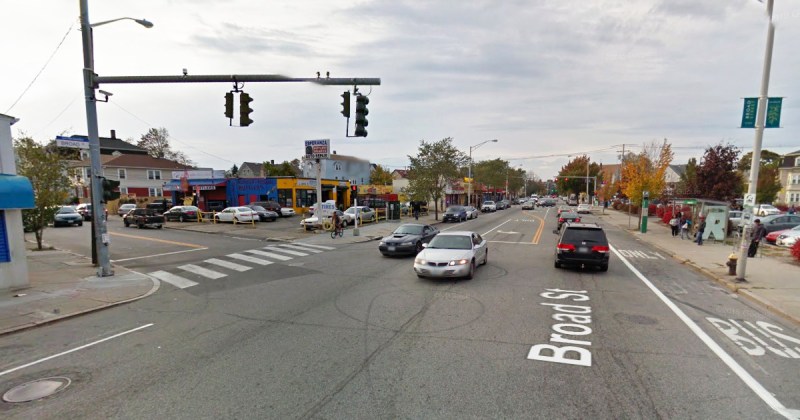A main corridor through southern Providence, Rhode Island, is getting overdue recognition for its local culture, and overdue investment in the safety of its users.
Broad Street, one of two thoroughfares between downtown and Roger Williams Park, has boasted "Latin American restaurants, bakeries, bodegas and Chimi Trucks galore" for years, thanks in part to immigrants from the Dominican Republic and elsewhere who began settling in the mid 20th century among earlier waves of Irish and Jewish immigrants there, says Marta Martinez of the locally based Rhode Island Latino Arts.
Now, the street is about to get a $4.3 million investment to improve life for the existing community and to enhance its draw for people from elsewhere.
"I'm excited to announce our increased investments to encourage even more visitors to experience Broad Street's unique offerings in the years to come," Mayor Jorge Elorza said in a news release Thursday.
One of those investments could be a protected bike lane along the corridor, planned as part of south Providence's participation in the Big Jump Project to quickly connect low-stress biking networks in 10 very different neighborhoods around the country. From the Providence Journal:
There will be a focus on improving bike and pedestrian safety on Broad Street, which was recently identified by city planners as the site of more accidents involving pedestrians and bicyclists than any other street in Providence.
The neighborhood also has more than 5,000 public-school students, and more than 40 percent of residents walk, bike, carpool or take public transit to get to work.
The city said a "community conversation" last month resulted in calls from residents for "a Broad Street that celebrates diversity and cultural heritage; provides excellent quality of life; fosters thriving businesses; realizes improved bicycle and pedestrian infrastructure; and incorporates better maintenance of the physical environment of the neighborhood."
It's also part of City Walk, a larger multi-year initiative to link Roger Williams Park and India Point Park through downtown Providence with continuous biking and walking routes.
Martina Haggerty, an associate director of special projects for the city, said that the former streetcar corridor of Broad is the narrowest of several possible candidates for protected bike lanes.
"We are definitely considering protected bike lanes on Broad Street," she said. "Although this corridor presents the most challenging conditions when compared to other sections of the City Walk project such as Clifford Street, Elmwood Avenue, and Huntington Avenue where wider curb-to-curb widths will give us more design flexibility. We are anxious to get a design team on board to help us think through the possibilities."
The planned investment in high-quality bike infrastructure is notable for Providence, which has almost no existing bike lanes.
"We have a lot of public outreach to do," said Alex KG Ellis, executive director of the Rhode Island Bicycle Coalition. "I think there's a lot of recognition of that from the planning department... We really haven't engaged in some of the discussions about on-street parking if we're going to need to if we're going to really connect our network, especially on Broad Street."
Ellis said it'll largely be up to Mayor Elorza whether he wants to lead a conversation about the tradeoffs between quality bike lanes and curbside auto parking.
"He's put a lot into this, so I wouldn't put it past him to really shine on that," Ellis said.
"We have a great neighborhood," Elorza said Thursday, according to the Journal. "We have a neighborhood also full of potential."
PlacesForBikes is a PeopleForBikes program to help U.S. communities build better biking, faster. You can follow them on Twitter or Facebook or sign up for their weekly news digest about building all-ages biking networks.






